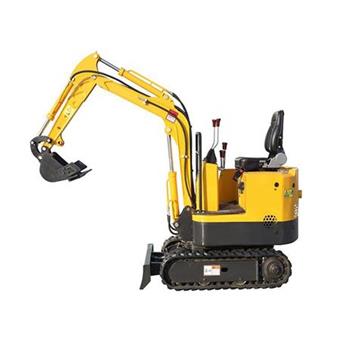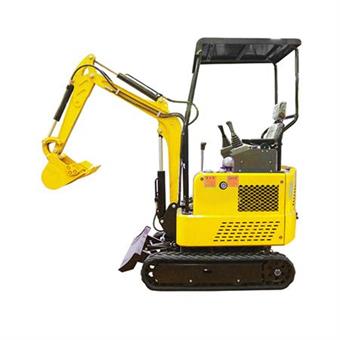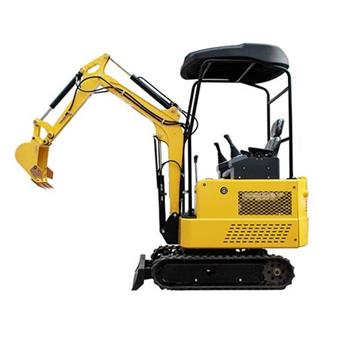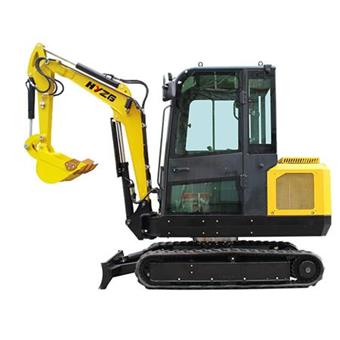
News
Excavators have come a long way from their early mechanical predecessors. Once seen as bulky, fuel-hungry beasts, today’s excavators are sleek, smart, and highly efficient machines designed to boost productivity while cutting operational costs. But just how much more efficient are excavators today compared to older models?
Let’s dig deep—pun intended—into how modern excavators are redefining performance, sustainability, and cost-efficiency in the construction and earthmoving industries.
If you were to compare an excavator from the 1980s to one today, the difference would be like comparing an old flip phone to a modern smartphone. Both perform their basic functions, but one does it faster, smarter, and with far more features.
Then vs. Now: A Quick Overview
| Feature | Excavators (1980s-1990s) | Modern Excavators (2020s) |
| Fuel Efficiency | 8–10 gallons/hour | 4–6 gallons/hour (up to 40% improvement) |
| Hydraulic Systems | Basic, low responsiveness | Smart hydraulics with load-sensing & energy recovery |
| Control System | Manual levers | Joystick + digital precision control |
| Emissions | High, unregulated | Tier 4 Final / Stage V compliant (low emissions) |
| Maintenance | Frequent, mechanical failures | Predictive maintenance via sensors |
| Technology | None | GPS, telematics, AI-assisted operation |
Modern excavators have improved fuel economy by up to 30–40%, reduced emissions by over 90%, and can accomplish tasks faster due to smarter hydraulics and digital controls.
One of the biggest improvements lies under the hood. Today’s excavators feature Tier 4 Final and Stage V compliant engines, designed to burn fuel cleaner and more efficiently.
What’s Changed:
Electronic fuel injection: Adjusts fuel delivery based on load, reducing waste.
Turbocharging with intercooling: Boosts power while maintaining efficiency.
Diesel particulate filters (DPFs): Capture and burn soot, ensuring clean exhaust.
Example:
The Caterpillar 320 GC, a modern 20-ton excavator, uses up to 20% less fuel than its predecessor thanks to optimized engine and hydraulic integration.
Efficiency takeaway: Less fuel burned = lower operating costs and smaller carbon footprint.
Hydraulic systems are the muscle behind every dig, lift, and swing an excavator performs. Modern machines use intelligent hydraulic systems that automatically adjust flow and pressure based on workload.
Key Advancements:
Load-sensing hydraulics: Delivers power only when needed.
Energy regeneration: Recycles hydraulic energy during boom lowering or swing braking.
Precision control: Operators can fine-tune movement speed and accuracy, reducing wasted motion.
Real-world impact:
Komatsu’s PC210LC-11 achieves up to 25% better fuel efficiency through a combination of load-sensing hydraulics and variable speed control.
Efficiency isn’t just about machinery—it’s about the human behind the controls. Modern excavators have transformed operator cabins into ergonomic command centers.
Comfort and Control Features:
Adjustable air-suspension seats
Joystick steering with customizable settings
Noise reduction cabins (up to 50% quieter than older models)
Climate control and advanced visibility
Digital touchscreen interfaces with real-time data
Why it matters:
A comfortable operator can work longer hours with less fatigue, improving daily productivity by up to 15–20%.
The introduction of digital technologies has made excavators smarter than ever. Manufacturers like Caterpillar, Hitachi, and Volvo now integrate AI, telematics, and GPS guidance systems directly into their machines.
What This Means for Efficiency:
GPS and 3D machine control help operators dig with pinpoint accuracy, minimizing rework.
Telematics systems track idle time, fuel use, and maintenance needs.
Remote diagnostics allow service technicians to troubleshoot without visiting the site.
Example:
Volvo’s ActiveCare telematics platform helped one construction firm reduce idle time by 27%, saving thousands of dollars annually in fuel.
The newest frontier in excavator efficiency is electrification. Electric and hybrid excavators are emerging as eco-friendly alternatives to traditional diesel-powered machines.
Benefits of Electric Excavators:
Zero emissions (ideal for indoor or urban environments)
50–70% lower energy cost compared to diesel
Reduced noise pollution
Fewer moving parts = lower maintenance
Example:
The Volvo EC230 Electric excavator delivers equivalent digging power to a diesel unit but operates with up to 45% lower total energy cost.
While electric excavators are still in early adoption, they represent the future of efficient construction equipment.
Old machines often failed unexpectedly, causing costly downtime. Today, predictive maintenance powered by telematics helps prevent breakdowns before they happen.
Smart Maintenance Features:
Real-time alerts for oil pressure, temperature, and filter status.
Remote diagnostics via mobile apps.
Automatic scheduling for routine service intervals.
Data-driven maintenance has reduced unscheduled downtime by as much as 30% across many fleets.
Efficiency isn’t just about doing more work—it’s also about saving more money and protecting the environment.
| Category | Older Excavators | Modern Excavators |
| Fuel Use (per 8-hour shift) | 80–100 liters | 50–60 liters |
| CO₂ Emissions | ~270 kg | ~170 kg |
| Maintenance Costs | High | 20–30% lower |
| Average Operating Hours per Year | 1,500 | 2,000+ |
Over a five-year period, a single modern excavator can save operators $15,000–$25,000 in fuel and maintenance costs alone.
Let’s look at a real-world example.
Machine: Hyundai HX220AL (22-ton excavator)
Improvements Over Previous Model:
13% lower fuel consumption
Faster cycle times (by 9%)
Enhanced load-sensing hydraulic system
Integrated “Eco Gauge” for energy monitoring
Result:
Contractors report up to 12% increase in overall productivity and reduced emissions by nearly 80% compared to older diesel units.
Looking ahead, efficiency improvements won’t stop here. The next wave of innovation includes:
Fully autonomous excavators guided by AI and computer vision.
Hydrogen-powered models for zero-emission heavy-duty work.
Augmented reality (AR) assistance for operator training and real-time guidance.
By 2035, experts predict excavators will be 60–70% more efficient than early 2000s models, thanks to these technologies.
Summary: Excavators Are Smarter, Greener, and More Cost-Effective Than Ever
So, how much more efficient are excavators today?
In short—dramatically.
From smarter hydraulics and AI-driven systems to electric models and predictive maintenance, today’s excavators deliver 30–50% better fuel efficiency, higher productivity, and reduced environmental impact.
These advancements not only save time and money but also push the construction industry toward a more sustainable future.
FAQs About Modern Excavator Efficiency
Modern excavators can save up to 40% in fuel consumption, depending on engine type and workload.
Yes! Electric models like the Volvo EC230 Electric offer comparable power and performance to diesel excavators, with far lower energy costs.
Telematics systems track performance data, reduce idle time, and alert operators to maintenance needs—boosting uptime and cutting fuel waste.
Some upgrades like GPS control and telematics modules can be added, but full efficiency improvements require newer models with advanced hydraulics and engines.
Expect greater automation, AI-based operation, and green power options like hydrogen or fully electric systems to dominate the next generation of excavators.
Previous: How Much Does a Hydro Excavator Cost?



